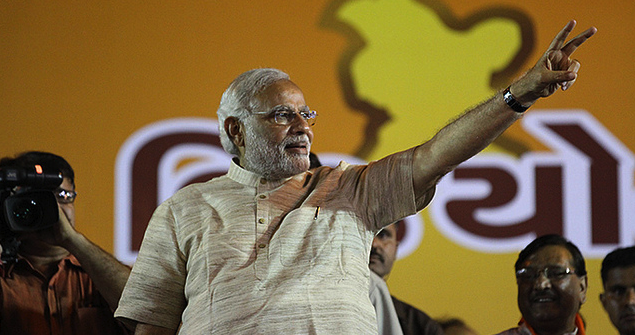Indian Aid – An Emerging Force

India has developed a multifaceted foreign aid programme despite domestic challenges.
There have been questions over the last decade of India as an “emerging donor” of development aid, given that the country still has domestic developmental challenges. On the one hand, India’s increasing trade and bilateral relationship with major players has strengthened its economy. Its relationship with the US alone brings in over US$20 billion of imported goods and exports to the US are double that amount each year. However, poverty, inequality, poor infrastructure and corruption have plagued India’s status seeking agenda, often detracting from India’s economic success and causing it to be seen as a developing country. Despite this stigma, India has committed to notable budgets for international development aid through a variety of avenues.
Prabodh Saxena (Asian Development Bank) recently presented on the Indian Development & Economic Assistance Scheme (IDEAS) at the 2nd Australasian Aid Conference held at the Crawford School, Australian National University on 12-13 February. The IDEAS is one of many portals of foreign assistance which India has created to:
- Boost its exports, especially of individual goods;
- Open new markets for Indian companies;
- Develop new ‘Lines of Credit’ (LoCs) such as power, railways, sugar plants, etc directed via India’s Export Import (EXIM) bank.
India’s funding for foreign assistance is channelled through multiple programs within different ministries of the Indian government. The primary aid program is administered through the Ministry of External Affairs (MEA), covering programs such as the Indian Technical and Economic Cooperation (ITEC) and aid to African countries through the Special Commonwealth Assistance Program for Africa (SCAAP); and the Ministry of Finance (MoF), which allocates budgets for contributions to the World Bank, IMF, UNDP, Technical Assistance Scheme of the Asian Development Bank (ADB) and the Organisation for Economic Co-operation and Development (OECD), to name a few.
Traditionally, India’s foreign assistance has been offered through training and capacity building programs. Africa has increasingly become the focus of Indian LoCs and training programs in recent years, as there is seen to be a lack of professional experience across the continent’s private sector. Arguably, training programs and business models are more effective than traditional forms of aid which align with the preferences of developing countries, especially recipients in Asia. India’s unique position, as a “developing country” with a strong economy, allows for better insight and differing approaches to aid than those provided by Western governments and agencies.
These attitudes on aid are most certainly a major factor in India’s decision to become a founding member of the new Asian Infrastructure Investment Bank (AIIB), which aims to improve the development needs of Asian countries. This new venture is believed to further bolster India’s reputation in foreign assistance, while developing its capabilities domestically.
Ashley Rogge is an intern at the AIIA National Office and is originally from Texas, USA. She has a Master’s Degree in International Affairs from the Australian National University and a Bachelor’s Degree in Anthropology from Cornell University. This article can be republished with attribution under a Creative Commons Licence.


